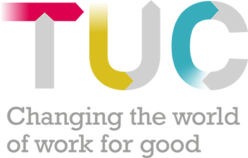The last 18 months have been a time of drastic change. Along with the rest of society, unions have had to adapt to the pandemic and the effects of the response to it. We had to work quickly to get operations functioning again with closed offices, safety concerns and huge disruption in our members’ workplaces.
Digital played a large part in this adaptation. Denied physical meetings and conferences, and with travel options severely limited, there was no choice but to move as much activity online as possible.
Across the TUC’s 48 affiliated unions, we saw a range of experiences. Many had recently moved to cloud office systems and CRM tools. These were helpful in overcoming initial hurdles as they enabled a quicker switch for staff and activists to working from home. Other unions brought forward change projects or enabled wider small-scale innovations across their organisations.
There has been a lot of good practice applied, and a lot of new ground broken in digital transformation. All unions have positive stories to tell about how they have coped. But there is a big opportunity for us in establishing common practice as well as isolated examples of good practice.
We all have something to learn from each other’s experience of 2020 that can help us adapt better to 2021 and beyond.
Our new report aims to contribute to that learning. Working with union leaders from across our movement, ably facilitated by colleagues from CAST, we collaboratively mapped a series of common challenges faced by unions after a year of adapting to the effects of Covid-19.
Some of these challenges have been caused by the response to the pandemic. Some are longer term or wider issues that the pandemic has increased the urgency or extent of dealing with.
But in all these cases, these challenges are likely to stay with us for the long term. We’ve grouped them into four main themes:
- Maintaining the increased engagement level post Covid.
- Balancing diverging experiences of work for members and staff.
- Adapting union structures to fit the new reality.
- Building relationships where contact is predominantly online.
Under each, we identified questions posed by our challenges. These are phrased as “How Might We” statements – a method used by digital design practitioners to establish a common understanding of a problem in a way that helps start to generate possible solutions.
Where possible, we have looked to show good practice from the union movement’s experience, or from work outside the movement that holds transferable learning.

